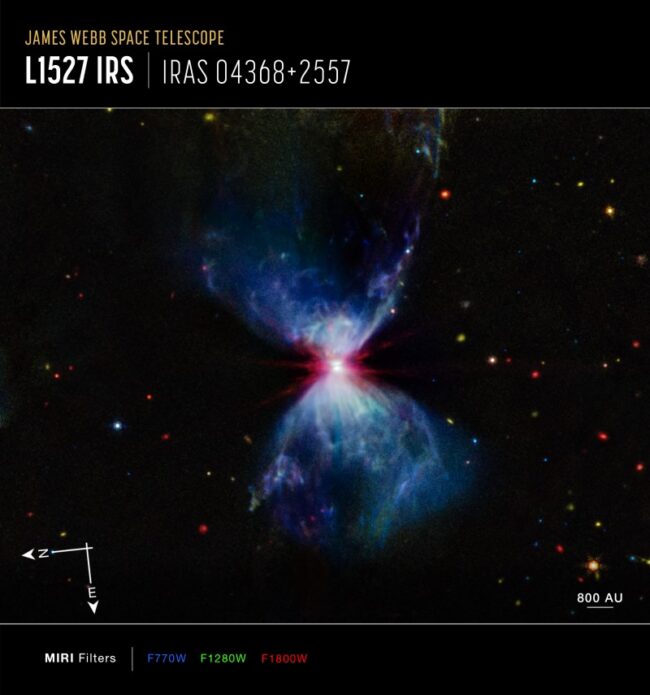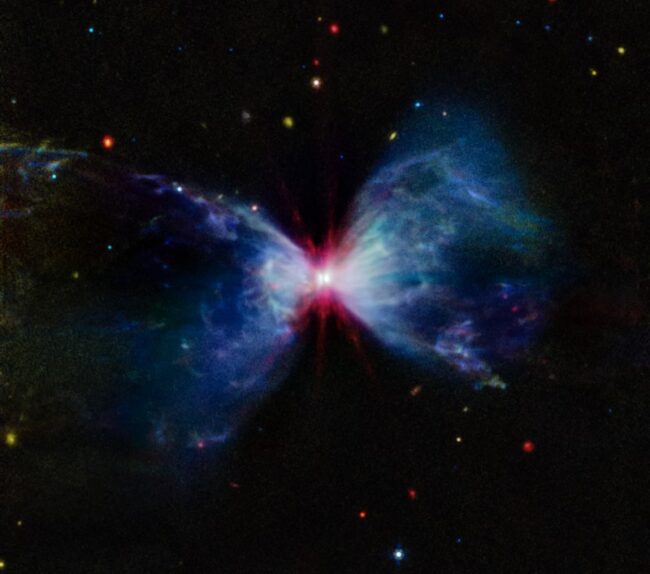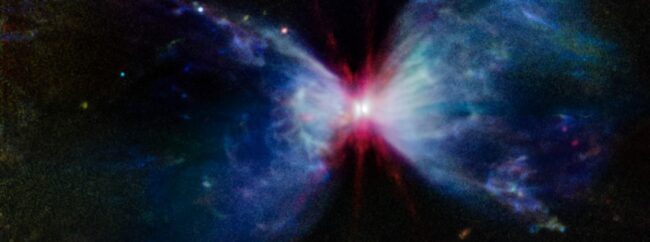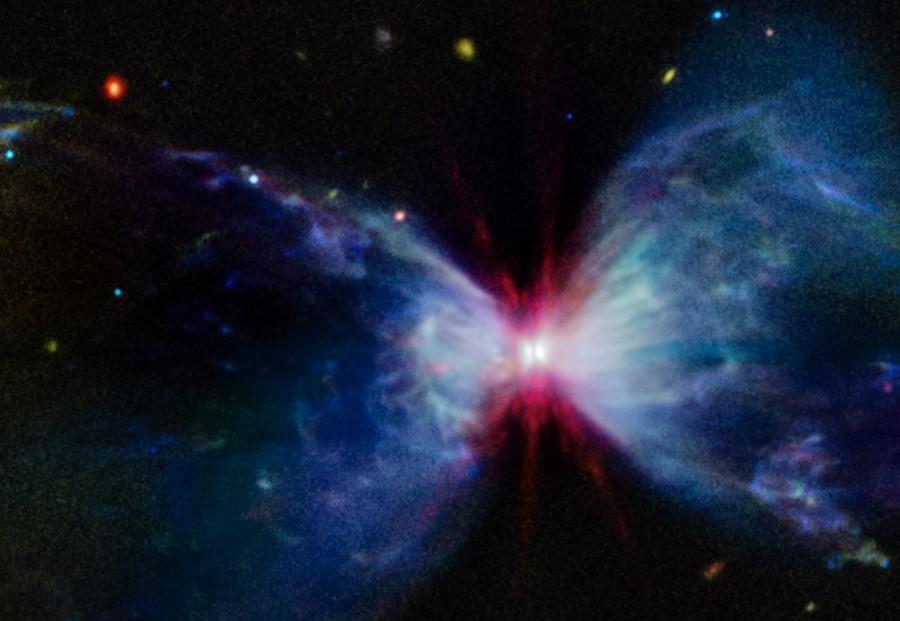The cosmos seems to come alive with a crackling explosion of pyrotechnics in this new image from NASA’s James Webb Space Telescope. Taken with Webb’s
The cosmos seems to come alive with a crackling explosion of pyrotechnics in this new image from NASA’s James Webb Space Telescope. Taken with Webb’s MIRI (Mid-Infrared Instrument), this fiery hourglass marks the scene of a very young object in the process of becoming a star, reported NASA.
A central protostar grows in the neck of the hourglass, accumulating material from a thin protoplanetary disk, seen edge-on as a dark line.

The protostar, a relatively young object of about 100,000 years, is still surrounded by its parent molecular cloud, or large region of gas and dust. Webb’s previous observation of L1527, with NIRCam (Near-Infrared Camera), allowed us to peer into this region and revealed this molecular cloud and protostar in opaque, vibrant colors, reported NASA.
Both NIRCam and MIRI show the effects of outflows, which are emitted in opposite directions along the protostar’s rotation axis as the object consumes gas and dust from the surrounding cloud. These outflows take the form of bow shocks to the surrounding molecular cloud, which appear as filamentary structures throughout. They are also responsible for carving the bright hourglass structure within the molecular cloud as they energize, or excite, the surrounding matter and cause the regions above and below it to glow.

This creates an effect reminiscent of fireworks brightening a cloudy night sky. Unlike NIRCam, however, which mostly shows the light that is reflected off dust, MIRI provides a look into how these outflows affect the region’s thickest dust and gases, reported NASA.
The areas colored here in blue, which encompass most of the hourglass, show mostly carbonaceous molecules known as polycyclic aromatic hydrocarbons. The protostar itself and the dense blanket of dust and a mixture of gases that surround it are represented in red. (The sparkler-like red extensions are an artifact of the telescope’s optics).

In between, MIRI reveals a white region directly above and below the protostar, which doesn’t show as strongly in the NIRCam view. This region is a mixture of hydrocarbons, ionized neon, and thick dust, which shows that the protostar propels this matter quite far away from it as it messily consumes material from its disk, reported NASA.
As the protostar continues to age and release energetic jets, it’ll consume, destroy, and push away much of this molecular cloud, and many of the structures we see here will begin to fade. Eventually, once it finishes gathering mass, this impressive display will end, and the star itself will become more apparent, even to our visible-light telescopes.

The combination of analyses from both the near-infrared and mid-infrared views reveal the overall behavior of this system, including how the central protostar is affecting the surrounding region. Other stars in Taurus, the star-forming region where L1527 resides, are forming just like this, which could lead to other molecular clouds being disrupted and either preventing new stars from forming or catalyzing their development, as reported by NASA.


COMMENTS